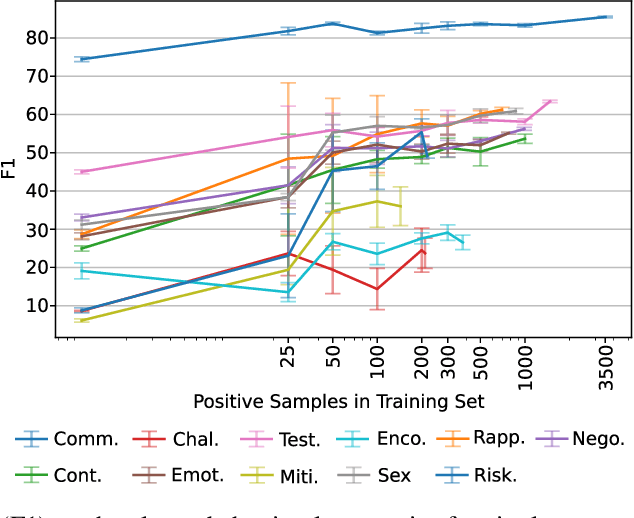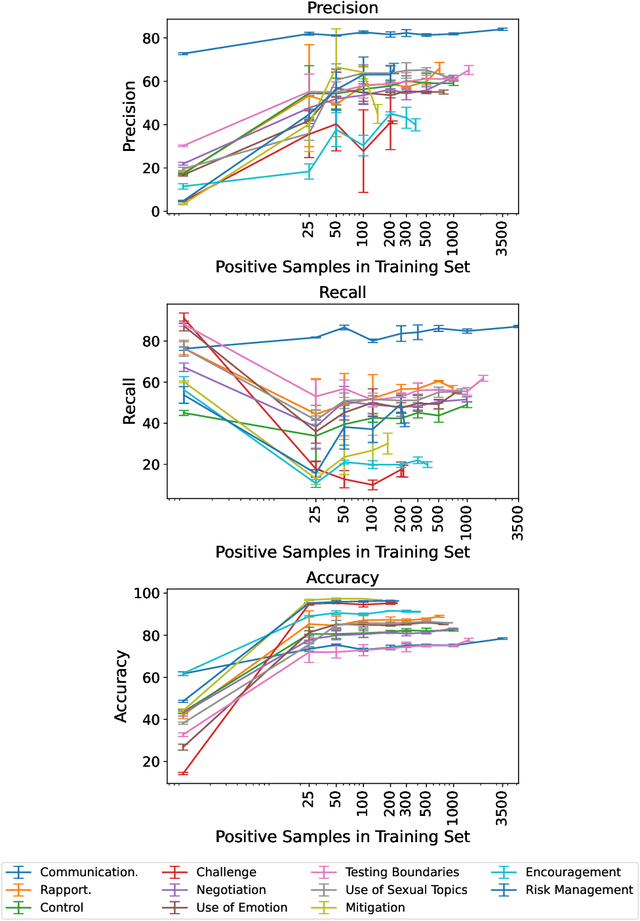Susan Giles
Can We Automate the Analysis of Online Child Sexual Exploitation Discourse?
Sep 25, 2022



Abstract:Social media's growing popularity raises concerns around children's online safety. Interactions between minors and adults with predatory intentions is a particularly grave concern. Research into online sexual grooming has often relied on domain experts to manually annotate conversations, limiting both scale and scope. In this work, we test how well-automated methods can detect conversational behaviors and replace an expert human annotator. Informed by psychological theories of online grooming, we label $6772$ chat messages sent by child-sex offenders with one of eleven predatory behaviors. We train bag-of-words and natural language inference models to classify each behavior, and show that the best performing models classify behaviors in a manner that is consistent, but not on-par, with human annotation.
 Add to Chrome
Add to Chrome Add to Firefox
Add to Firefox Add to Edge
Add to Edge